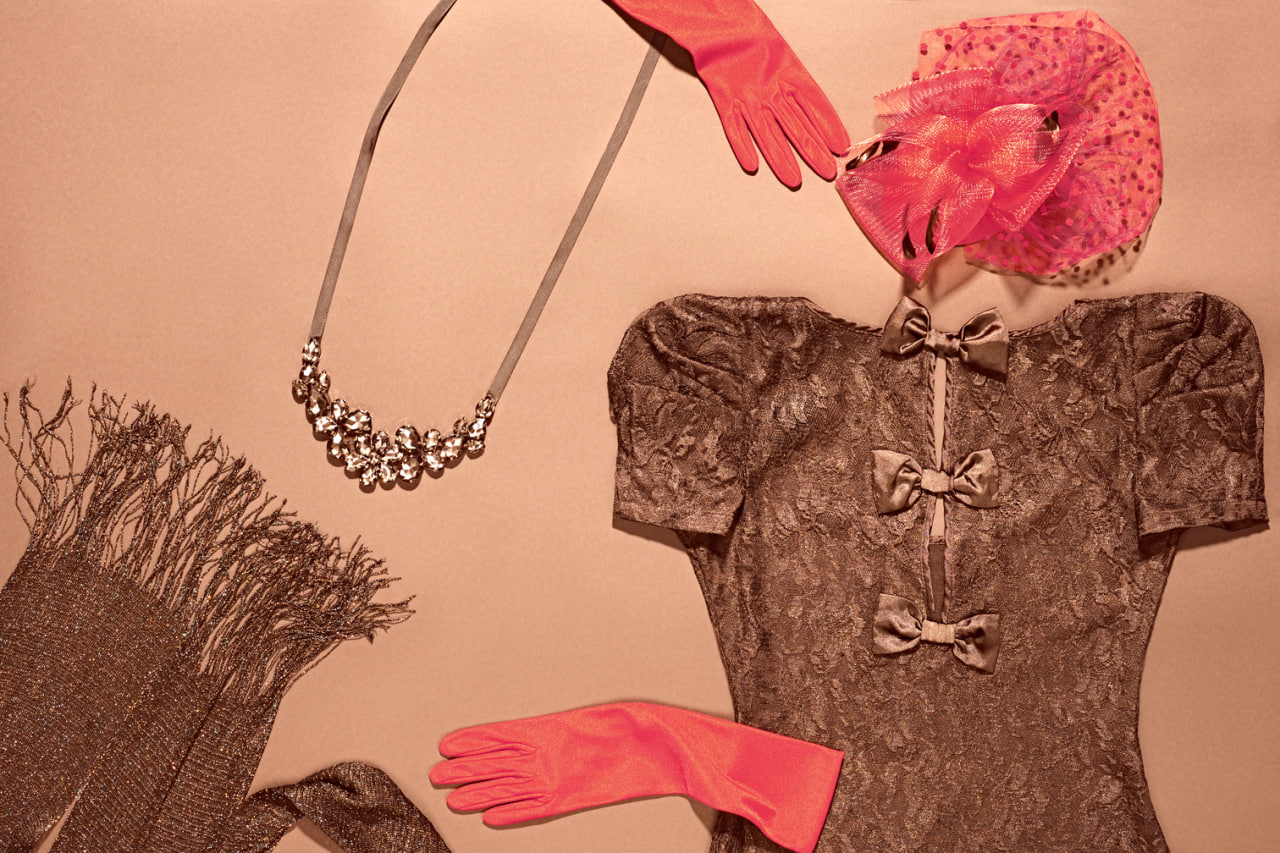Textiles, Techniques, and Craftsmanship
The art of fashion begins long before the final garment takes form. It begins with the materials, the hands that shape them, and the centuries of knowledge woven into each thread. Textiles, techniques, and craftsmanship form the invisible foundation of every style movement in history. They represent the meeting of creativity and skill—the transformation of raw material into wearable art. Understanding these elements is essential to appreciating fashion not only as design but as human achievement.
Throughout history, the making of textiles has mirrored civilization’s progress. From the early spinning of plant fibers to modern innovations in fabric engineering, every era has brought new methods of creating texture, color, and structure. Behind every garment lies a story of invention, patience, and artistry. The evolution of craftsmanship reflects the journey of culture itself—how people learned to weave identity, tradition, and imagination into the clothes they wore.
The Origins of Textile Creation
Long before fashion existed as an industry, humans sought ways to cover and decorate their bodies. The earliest textiles were born out of necessity, yet even the simplest materials carried traces of creativity. Ancient civilizations used what nature provided—plant fibers, animal skins, and minerals—to craft fabrics that protected and expressed individuality.
In Egypt, linen became the symbol of purity and status. Crafted from flax fibers, it was lightweight and ideal for the hot climate. The Egyptians mastered bleaching and fine weaving, creating fabrics so delicate they resembled modern gauze. In Mesopotamia and India, cotton emerged as a soft, breathable alternative, prized for its versatility. Meanwhile, in China, the discovery of silk transformed textile history forever.
Silk weaving, first developed during the Neolithic period, represented a level of refinement unseen elsewhere. The shimmering fabric, extracted from silkworm cocoons, became a precious commodity that linked empires through trade. The Silk Road carried more than goods—it carried culture, aesthetics, and knowledge about weaving and dyeing.
Wool, another ancient fiber, found prominence in colder regions such as Greece, Rome, and Northern Europe. Its warmth and resilience made it indispensable for daily life. The process of spinning wool by hand symbolized both labor and art, a rhythmic act that defined domestic and communal life.
The Development of Weaving and Dyeing Techniques
Weaving is among humanity’s oldest crafts, and its evolution marks one of the great technological achievements of civilization. The loom, in various forms, has been used across continents for thousands of years. Early vertical looms gave way to horizontal and foot-treadle designs, allowing weavers greater control and complexity. Patterns, once limited to simple stripes or checks, evolved into intricate motifs that reflected cultural identity.
Each civilization developed its own aesthetic vocabulary through weaving. Persian carpets, Chinese brocades, and Andean textiles all showcased mastery of geometry, symmetry, and symbolism. These designs were not merely decorative—they communicated spiritual beliefs, social rank, and regional pride.
The art of dyeing added color and emotion to fabric. Natural dyes, extracted from plants, insects, and minerals, brought vibrancy and meaning. Indigo, cochineal, madder, and saffron created deep hues that became markers of wealth and tradition. Master dyers guarded their formulas closely, passing them through generations as secrets of the trade.
The chemistry of color was as much an art as a science. Some shades required months to perfect, while others depended on rare ingredients found only in specific regions. The production of Tyrian purple, extracted from sea snails, was so costly that it became reserved for royalty. In every culture, color became a symbol of identity—a language woven into the fabric itself.
The Renaissance of Craftsmanship
During the Renaissance, craftsmanship in textiles reached new levels of sophistication. European weaving centers such as Florence, Venice, and Lyon flourished under royal patronage. Luxury fabrics like velvet, brocade, and damask became symbols of opulence and taste. These textiles were labor-intensive, often taking months to produce on specialized looms operated by skilled artisans.
Embroidery also flourished during this era. Threads of gold and silver, pearls, and precious stones were used to decorate garments, altar cloths, and household textiles. The needle became an instrument of storytelling, with patterns reflecting mythology, nature, and religious devotion.
Tailoring advanced alongside textiles. As fabrics grew more refined, so did the art of cutting and shaping them. Garments became architectural in their structure, reflecting the same attention to proportion and perspective that defined Renaissance art. The interplay between fabric and form marked a turning point in the concept of design—it was no longer enough to create material beauty; it had to fit the human body with precision and grace.
The Industrial Revolution and Mechanization
The 18th and 19th centuries transformed craftsmanship through industrialization. Machines replaced many traditional methods, increasing production speed and accessibility. The spinning jenny, power loom, and mechanical sewing machine revolutionized textile manufacturing, making fashion available to the growing middle class.
However, this shift also marked a loss of individuality. Handweaving and embroidery, once essential crafts, were overshadowed by mass production. Yet, even within industrial settings, craftsmanship adapted. Pattern printing, lace-making machines, and chemical dye innovations expanded the creative possibilities of fabric design.
The Arts and Crafts movement of the late 19th century arose as a response to industrialization. Led by figures such as William Morris, it sought to restore the integrity of handmade work. The movement emphasized quality, authenticity, and the emotional connection between maker and material. This revival reintroduced the idea that true beauty lies not only in perfection but in the human touch.
Traditional Techniques Around the World
Beyond Europe, traditional craftsmanship continued to thrive in unique and diverse forms. In Japan, textile artistry evolved into a spiritual practice. Techniques like shibori dyeing and kimono weaving combined precision with philosophy. Each pattern carried symbolic meaning—waves, clouds, and blossoms representing balance and transience.
In India, centuries-old methods such as block printing, ikat, and zari embroidery flourished. The skill of handweaving communities produced fabrics like muslin and khadi, known for their texture and purity. Indian textiles influenced global fashion through trade, inspiring designs from Persia to Europe.
In Africa, textile traditions such as Kente weaving and indigo resist-dyeing held deep cultural significance. Every color and pattern conveyed heritage, social role, and community values. These textiles were not just decorative—they were repositories of history.
Latin American artisans preserved ancient techniques such as Andean backstrap weaving and Mayan embroidery, each thread connecting present generations to ancestral identity. Across the world, craftsmanship was more than skill—it was cultural continuity.
The Modern Revival of Craftsmanship
In the modern era, technology and tradition coexist in a dynamic tension. While industrial production dominates global fashion, there has been a resurgence of appreciation for handmade techniques. Designers and artisans increasingly recognize the value of craftsmanship as both cultural heritage and sustainable practice.
Contemporary fashion houses collaborate with artisans to preserve endangered crafts. Haute couture continues to rely on hand-sewn details, beadwork, and embroidery that no machine can replicate. In parallel, smaller independent designers embrace slow fashion—creating limited, high-quality pieces that emphasize longevity over mass production.
Textile innovation also reflects a new era of responsibility. Researchers experiment with organic fibers, biodegradable fabrics, and sustainable dyes. Techniques once used for ornamentation now serve ecological goals, bridging ancient wisdom with modern technology.
The Essence of the Craft
At its core, craftsmanship represents dedication—the patience to master a process and the passion to create meaning through material. Every woven thread, every stitch, and every cut carries the intention of its maker. This is what distinguishes fashion from manufacturing.
True craftsmanship balances tradition and evolution. It honors the skill of generations while embracing innovation. Whether in a centuries-old loom or a futuristic laboratory, the art of textile creation remains a dialogue between hands and imagination.

